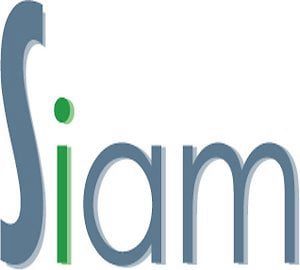EU-wide PFAS ban in firefighting foam justified!

Foto: Pexels von Pixabay
SEAC believes that the proposed restriction on the marketing, use and formulation of PFAS in firefighting foams is the most appropriate EU-wide measure to address the identified risks. This takes into account available alternatives and the balance between benefits and costs of the impediment to society. These conclusions follow an opinion on the risks adopted by ECHA’s Risk Assessment Committee (RAC) in March 2023.
Evaluation after transition period
However, SEAC suggests that an evaluation of available fluorine-free alternatives should be conducted for sites that produce, handle, or store hazardous substances (under the Seveso Directive) and surrounding sites before the end of the ten-year transition period. Similarly, a review would be needed for use in offshore facilities in the oil and gas industry, where SEAC recommends that the transition period be extended from five to 10 years. The committee believes the assessments are important for maintaining safety where fires can have serious environmental and human health consequences.

“There are some applications where the committee felt that the consequences of reduced fire protection could be catastrophic if there are no alternatives that work well enough at the end of the transition periods.
There probably will be alternatives, but it’s important that we minimize the likelihood that there won’t be,” said María Ottati, president of SEAC, in a new episode of the Safer Chemicals podcast.
Extending the transition period for civilian shipping
SEAC also recommends extending the transition periods for civil marine use from three to five years and for marketing certain types of portable fire extinguishers from six to 18 months. This is to ensure that technically suitable fluorine-free alternatives are available after the transition periods expire.
ECHA prepared the proposal at the request of the European Commission. It was first introduced in February 2022.
What comes next?
After approval of the SEAC opinion, ECHA prepares the joint opinion of both committees for publication and sends it to the European Commission together with the restriction proposal.
The Commission will then decide whether a restriction is necessary. If so, it will propose an amendment to the list of restrictions (Annex XVII of the REACH Regulation). The proposal will be voted on by EU member states in the REACH Committee and considered by the European Parliament and Council before entering into force.
Other outcomes of the June meetings:
- RAC and SEAC discussed recommendations to the dossier submitter for the proposal on universal restriction of PFAS submitted by Denmark, Germany, the Netherlands, Norway and Sweden. A six-month consultation on the proposal runs until September 25, 2023.
- SEAC adopted its opinion in support of the Dutch restriction proposal, which addresses occupational exposure to the aprotic solvents DMAC and NEP.
- SEAC adopted its opinion on Italy’s proposal to restrict hydrogenated terphenyl.
- RAC adopted its opinion on an ECHA restriction proposal for chloroalkanes C14-C17, while SEAC agreed to its draft opinion. A 60-day consultation on the SEAC draft opinion runs until Aug. 14, 2023.
- RAC adopted 14 opinions on harmonized classification and labeling.
- RAC adopted an opinion on the scientific evaluation of occupational exposure limits (OELs) for 2,3-epoxypropyl methacrylate (glycidyl methacrylate).
- The RAC adopted its opinion based on an Article 77(3)(c) request on the acute toxicity classification of silanamine.
- RAC and SEAC issued two opinions on an application for authorisation for trixylyl phosphate and five opinions on applications for authorisation for chromium trioxide.
Source: ECHA
Also Read: New EU project to enforce chemicals in products offered online
Reservation
This information has been compiled with the greatest possible care, in some cases from different information sources. (Interpretation) errors are not excluded. No legal obligation can therefore be derived from this text. Everyone dealing with this subject has the responsibility to delve into the matter!

Trackbacks/Pingbacks